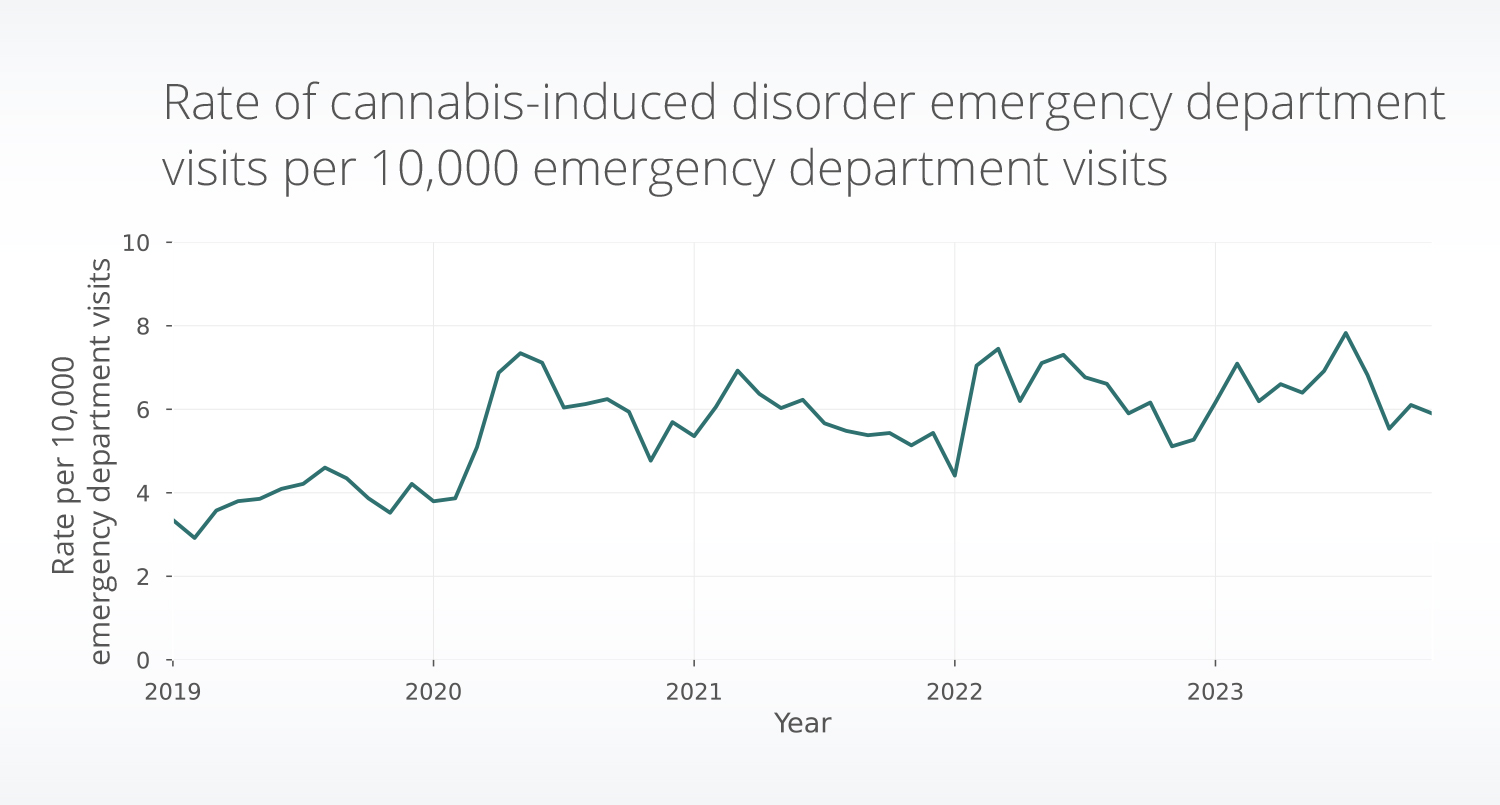Cannabis-related emergency department visits from 2019-2023
Sign up for a free account to read full studies, with full transparency into methods and results, and experience the power of Truveta Studio
Authors: Truveta Research ⊕Truveta, Inc, Bellevue, WA
Date: January 11, 2023
Abstract
Background
Medical use of cannabis first became legal in California in 1996, and legalization has expanded to 39 states for medical use and 25 states for recreational use as of January 2024. However, there is a complex relationship between the use of cannabis and mental health disorders. People with mental health-related illnesses are more likely to use cannabis; however, cannabis has also been linked to earlier onset of mental health-related illnesses. This study aimed to understand if there was an increase in cannabis-induced disorder emergency department visits.
Methods
We identified patients with emergency department visits between January 2019 and November 2023. Of these patients, we identified those for whom the visits included cannabis-induced disorder diagnoses and those identified using the CDC definition for cannabis-involved emergency department visits. We calculated the monthly rate of both measures per 10,000 emergency department visits.
Results
We included more than 33.5 million emergency department visits during the study period.
More than 14,500 people (from nearly 19,000 emergency department encounters) experienced cannabis-induced disorder diagnoses. The 2019 rate of cannabis-induced disorder emergency department visits per 10,000 emergency department visits was 3.9±0.5 and increased 46.2% in 2020. The rates remained elevated and continued to increase through the end of the study period.
Within the 33.5 million encounters, we found more than 144,000 people with over 173,000 cannabis-involved emergency department visits. The 2019 rate of cannabis-involved emergency department visits was 39.8±1.9 per 10,000 emergency department visits. We saw a 46.5% increase to the 2020 rate; however, we do not continue to see increases in more recent years.
Discussion
Between 2019 and 2020, we found a nearly 50% increase in the rate of both cannabis-induced disorder emergency department visits and cannabis-involved emergency department visits. The rate of cannabis-induced disorder visits continued to remain increased through 2023, while these trends were not seen with the cannabis-involved emergency department visits. This may highlight a concerning and persistent public health challenge. The substantial and sustained rise in the rate of cannabis-induced disorder visits between 2019 and 2023 suggests a growing impact on individuals’ health, raising questions about the potential short- and long-term consequences of increased cannabis use. However, the absence of a parallel increase in cannabis-involved emergency department visits during the same period may underscore a gap in our understanding of systems used to provide assistance to people with these conditions. This disparity in trends underscores the need for additional research to further understand the complex interplay between cannabis use patterns, mental health, and the utilization of emergency department services.

